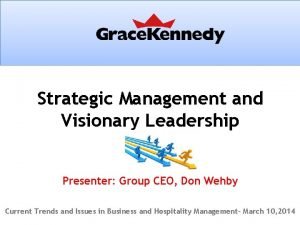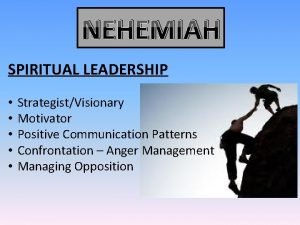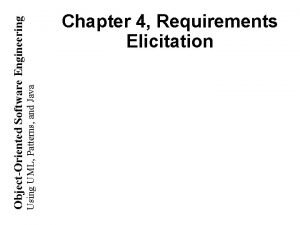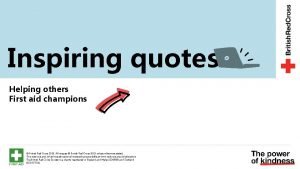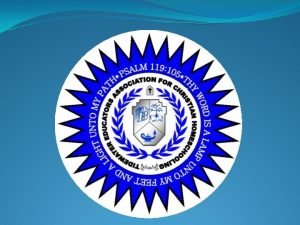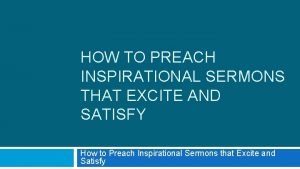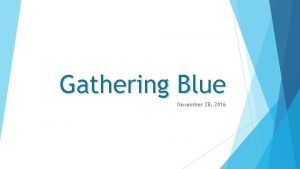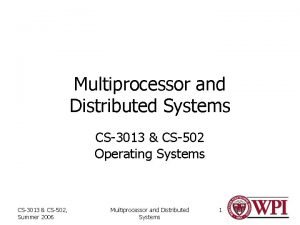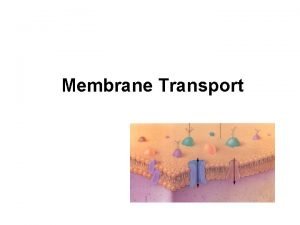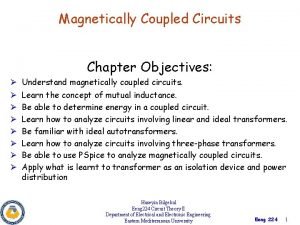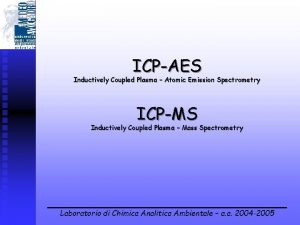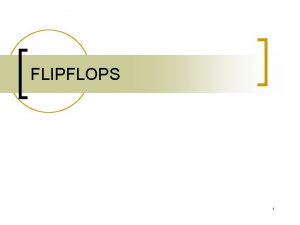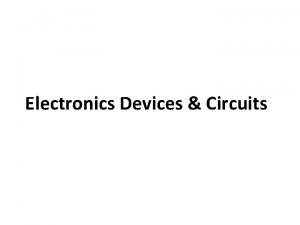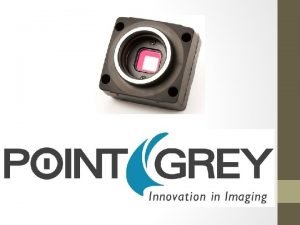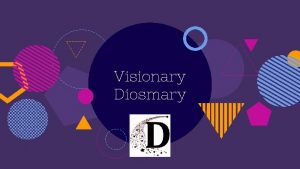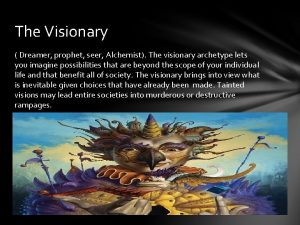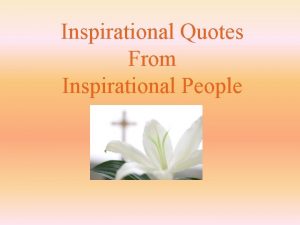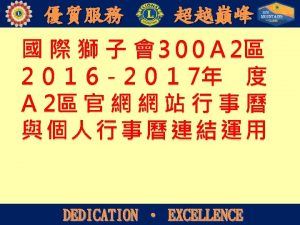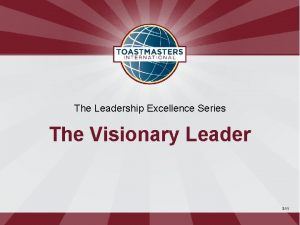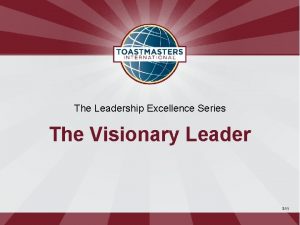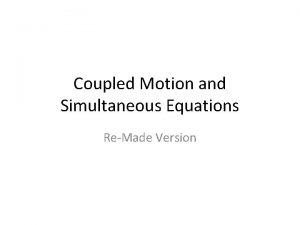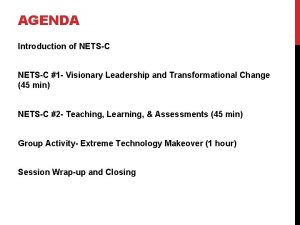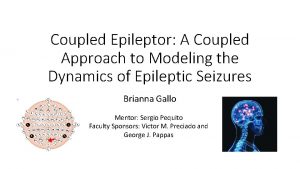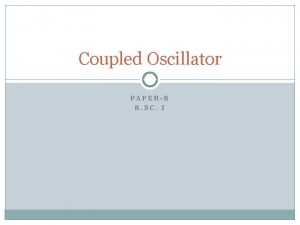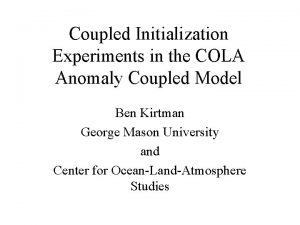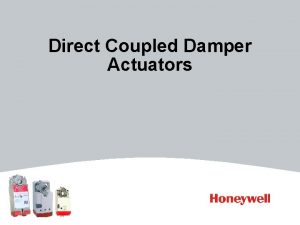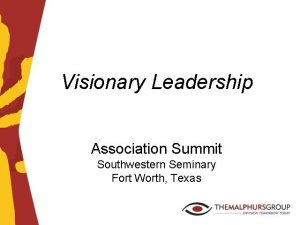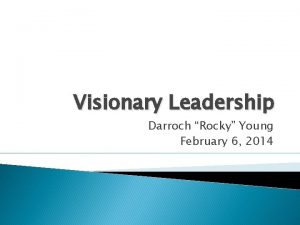IT Excellence is visionary and inspirational leadership coupled






















- Slides: 22

IT Excellence is visionary and inspirational leadership, coupled with constancy of purpose” (1) David Boyles CXO Technology Advisor Microsoft Corporation 1) EFQM – European Foundation for Quality Management

Agenda l Excellence Model Ø Ø l Leadership Competitive Capabilities Enablers (Key Frameworks & Processes) Outcomes, Results Examples of Best Practice

IT Excellence Model 1. Leadership 2. Competitive Capabilities 4. Results, Outcomes 3. Key Enablers

1. Leadership l l l Vision Values Constancy of Purpose Clear Objectives Inspiration Note: Also includes credibility, hard work, focus, compassion, etc.

2. Competitive Capabilities l l Driven by market forces: customer behaviour, competitor activity, technology trends Aspirational (look forward to the outcomes, then roll back to the present) What must be put in place over time to achieve the aspiration? IT capabilities are the direct result of needed BU capabilities

IT Capabilities l Non-negotiable Ø Ø Ø “Keep the trains running” Value for money (ROI) Information Security l Strategic Competitive Ø Ø Ø Risk Management Value Management Self Service (int. & ext. ) Innovation in products & services Business Process Improvement Brand Enhancement

3. Enablers l l l People Governance, policy, strategy Processes Infrastructure Partnerships

People l l l Right people, right jobs Competency-based hiring Tiered development strategy

Governance, Strategy, Policy l l All about business & stakeholder alignment Based on both present and future needs Grounded on internal and external facts and trends Reviewed and updated regularly

Critical Processes l l l Information Security Management Project Management Software Development Reengineering Support Operations Management

Infrastructure l l l l Should be “dial tone” – always there and working Five year planning horizon (out of synch with most BU planning horizons) Asset life managed Flexible and scalable Standardised, component architecture Self-healing Real time business process monitoring ITIL as management framework

Partnerships Partners should: ØUnderstand your business, your objectives and your capability needs ØDeliver specific capabilities or solutions ØDemonstrate clarity of products & solutions roadmap ØBe full participants in major projects ØBe subject to the same SLAs as IT ØHave access to all needed information ØBe willing to work with other partners

4. Outcomes/Results l l Employee satisfaction & loyalty Customer satisfaction & loyalty Market share growth Shareholder satisfaction Ø Ø Ø l Total shareholder return Transparency No negative surprises Community Value

Examples of Best Practice l l People Governance, Strategy & Policy Infrastructure Other Quick Examples

People: Best Practice l Competence-based Hiring l Job descriptions aligned to competitive capabilities Job descriptions must specifically define: Ø Ø Ø l Continuous Improvement l l l Technical/business skills People skills Values & behaviours Interview questions based on all three areas Use scoring and qualitative comparison system Multiple interviews Team interviews

People: Best Practice l Tiered Development Strategy All IT Employees Ø Ø Ø l Specialists Ø Ø l Ø Continuous Improvement CMM/TQM PMBOK ITIL Etc High Potentials Ø l Performance plans Development plans Online Training Learning vouchers Teaming skills Mentoring Job rotation Leaders Ø Ø Ø 360 Feedback Executive MBA Styles Assessment

Governance: AGL IT Executive Committee *1 This includes the review and approval of the detailed roadmap to achieve the vision, objectives and strategy *2 Examples: Information Security, Identity Management, Software Development Life-cycle, etc. *3 This includes applications, infrastructure and information security architectures *4 IT Infrastructure initiatives are proposed by the CIO; Shared application initiatives (e. g. Intranet) are proposed by the application owner and the CIO; Business Unit IT initiatives are proposed by the Business Unit Sponsor

Infrastructure: Desktop TCO Varies Widely…. Why? Direct Cost Bucket Help Desk Level 1 Client Support Server/LAN Support Collaborative Support Workgroup Architect Design and Testing Supplier Management Procurement Admin. Break/Fix Client Capital Server Capital Software Capital DSM Infrastructure Total Low-End Cost/User for 5, 000 Users $100 $350 $140 $50 $45 $73 $80 $64 $46 $50 $400 $100 $125 $1, 724 High-End Cost/User for 5, 000 Users $300 $1, 400 $350 $113 $157 $200 $113 $120 $170 $1, 200 $400 $25 $5, 097 Client TCO varies from <$2 K to >$5 K/user/year, depending on application architecture, standardization, automation, service level, and geography/demographics. Model & Data courtesy METAGroup. Copyright 2003 Meta. Group.

Infrastructure: Desktop Best Practice l l l Rationalise and standardise on a few hardware/software images (eg, mobility platform for executives, call centre platform, knowledge worker platform, etc. ) Keep software current and consistent (reduces complexity, avoids problems between versions, improves info security, etc. ) Automate deployment of images, updates and patches (made possible via #1 & #2 above). Little or no human intervention needed at the desktop or server level. Automate support (FAQs on line, help desk software, etc. ). For example, best practice environments take 1 or 2 calls per month per user. Poor environments take 2+ calls per month per user. Manage mobility platforms (only those who are mobile get them). Mobile platforms (laptops, tablets) are significantly more expensive than desktops and they get lost, are damaged by being dropped, and get stolen with great regularity.

Infrastructure: VOIP at Microsoft l l l Examined complete deployment of VOIP right down to the handset level. Couldn’t justify costs. Opted instead for tiered approach utilising standard digital handsets connected to VOIP gateways at the PBX (IP trunk card). VOIP between all major Microsoft facilities over the Microsoft WAN Cost reductions have ranged from 7 -12% of total communications costs Next stage will utilise public WANs for further cost reductions

Other Areas: Quick Examples l Software Development Ø Ø l Information Security Ø Ø l CMM/CMMI is certainly best practice. Not as well known is Fagan’s Inspection Process. Many of the benefits of CMM can be realised in a very short time frame with the Fagan Inspection Process. Finally, Fagan plus TQM can serve as the foundation for CMM 3 or even CMM 4. Many companies approach this piecemeal, with various vendors providing separate pieces of the puzzle ISO 17799/AS 7799 can provide a complete framework and model to implement best practice. Also, many free tools and documents are available at no cost on the internet. Project Management Ø Ø Most projects fail because one or more critical elements of excellent project management are missing or lacking in quality (schedule, scope, status reports, risks, etc. ) PMI and PMBOK provide the training and tools to run best practice projects.

Questions? Feedback? l l Why aren’t more Australian software development shops certified to CMM 4 or 5? Why is infrastructure investment so difficult to justify? Acknowledgement: The European Foundation for Quality Management (EFQM) Excellence Model served as the basis for this presentation. EFQM provides a comprehensive model for corporate excellence. I altered some aspects of the model to better profile the IT environment. .
 Visionary leadership and strategic management
Visionary leadership and strategic management How do charismatic leaders influence followers
How do charismatic leaders influence followers The jaguar poem summary
The jaguar poem summary Nehemiah visionary leader
Nehemiah visionary leader Visionary scenario example
Visionary scenario example What are claims of value
What are claims of value First aid quotes
First aid quotes Twinkl leavers poem
Twinkl leavers poem Graduation letters to friends
Graduation letters to friends Maikling kwento kahulugan
Maikling kwento kahulugan Genre in madame butterfly
Genre in madame butterfly Short story examples
Short story examples Graduation letter to friend
Graduation letter to friend Inspirational sermons
Inspirational sermons Circular metal percussion instruments phrase or clause
Circular metal percussion instruments phrase or clause Transactional leadership and transformational leadership
Transactional leadership and transformational leadership Tightly coupled multiprocessor
Tightly coupled multiprocessor Refractory period
Refractory period Coupled circuits
Coupled circuits Inductively coupled plasma
Inductively coupled plasma Sr latch with nor gates
Sr latch with nor gates Multistage amplifier circuit
Multistage amplifier circuit Charge coupled device
Charge coupled device
